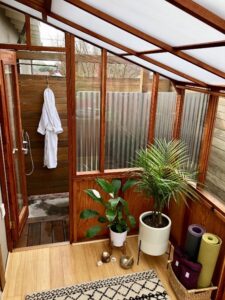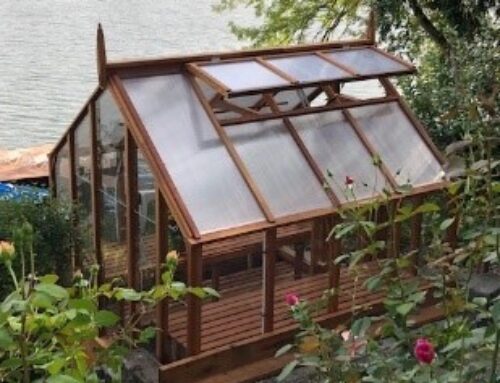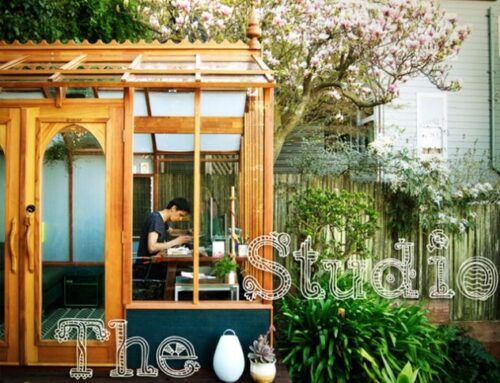It’s important to create an environment that helps you relax so you can practice your meditation techniques more effectively. A yoga room should feel comfortable and peaceful. You should decorate it to reflect your personal style and spiritual needs.
A dedicated yoga space in a greenhouse can improve your overall health and wellness by motivating you to practice more frequently. Practicing at home saves time, money, energy and stress. A dedicated greenhouse space gives you the opportunity to set aside your worries and concerns and focus solely on your practice. Ideally, it becomes a sanctuary where you can retreat from the stress and worry of the world.
Visualize a Dedicated Greenhouse Yoga Space
A calm and relaxing atmosphere is key to practicing yoga. You want to create a space that inspires peace, mindfulness, focus and tranquility. Imagine your greenhouse yoga space, with a comfortable floor, perhaps a favorite plant or two inside, and views outside of your yard and beyond. It may be raining, snowing or windy outside, but inside your oasis you hear and see nature around you. The space can be heated or cooled, and you can even install a ceiling fan for gently air circulation.
Say your greenhouse has a second door, an on the other side of that it opens into an outside shower for cleaning and cooling yourself after each session. Having the greenhouse near your home may benefit having a bathroom closer.
Below the glass side walls is a basewall, either provided by Sturdi-Built or build it yourself. Consider finishing the basewall on the inside with very simple color that complements the view from the glass walls. Some customers install stained glass over the door which adds more style and color.
Inside your area, add storage for to hold yoga mats, blocks, and other props. Depending on the width of your yoga greenhouse, redwood beams can beautify the ceiling.
Sizing a Yoga Greenhouse
A yoga greenhouse provides a central space to gather for practice. To determine its dimensions we can use the standard yoga mat length of 68″or 71, and 24” and 26″ wide. Around each mat, add 20” of space to allow the free movement of users during the exercises. Besides the yoga space do you want space for mat storage, plants, countertops to leave ‘tools’ during your times (water bottles, towels, blankets, slippers).
A good starting point for a yoga greenhouse is about 20 square feet per person. This will give you a pleasant area to practice. Make sure there is enough room to move through your sun salutations and to store your props. If you will be practicing handstands and other inversions, make sure you have enough space around you so that if you fall or tumble, you don’t end up breaking something.
Sometimes a TV monitor is desired if you want to use or follow an online or a taped instructor-led yoga session. Power for the TV and player and even a wired internet connection may be needed.

Environmental Conditions Inside
Environmental Conditions Inside
Acoustics
There is a belief that yoga spaces must be completely silent, but precisely the idea of these disciplines is to be developed in spite of the ambient noise around us. For more thoughts, please see Sara Doyle’s website. In a yoga greenhouse, sounds (and even smells) can be integrated by incorporating sweet smelling plants, keeping a window to hear garden sounds, and even including moving water inside may be desired. It’s your time, your space and your rules.
Ventilation
Yoga in a closed room can become stuffy as air is not being. Yoga in a space with fresh or well-ventilated air is better. Greenhouse Yoga space ventilation can be sourced from automatic opening roof vents that let warm air out, jalousie windows, circulation fans, and even with portable air condition and heaters with built-in fans. A yoga greenhouse yoga can have so much ventilation that it is close to a space outdoors, without getting effected by rain, snow, etc. Since breathing is the basis for yoga skill development, it is important to allow cross ventilation across the room, making sure that there is a certain current renew of oxygen inside. Customers add opening Jalousies windows for at least two sides of the yoga greenhouse.
Lighting
Natural lighting is always best over manufactured light. Greenhouses offer clear glass side walls and roof as well, so sunlight or indirect light in a shady area is available. In the case of Yoga, direct connection to the sun is essential in many exercises. That’s why we should always favor natural lighting, and is necessary, to incorporate systems to regulate their intensity, allowing darken the room completely if necessary. A greenhouse from Sturdi-Built is perfect for good lighting during the day. Adding lights with dimmer switches will help your sessions in the evenings, early mornings or night.
Aesthetics and Materials
The wood framing of a Sturdi-Built greenhouse adds to the aesthetics of a yoga space. Warm look of stained wood helps you to achieve a certain degree of initial concentration. Flooring inside is very important, floors are usually covered with wood or materials rather ‘soft’ and warm to the touch. Adding radiant flooring inside increases air tempreture while increasing comfort in the winter or colder times.
Orientation and Geometry
A yoga greenhouse may be oriented in any direction. If you have some choice, align the longer side walls with a southern facing.
Cleaner Air with Plants
It’s a greenhouse, so get with the vibe and include plants inside. Being around plants and tending to them cultivates mindfulness, relaxation, and peace of mind. Plants also help purify the air in your home, which is especially important during pranayama and challenging sequences. Look for houseplants that grow well with the level of light in your space. If you don’t have a green thumb, consider succulents, cacti, snake plants, spider plants, and ferns because they require very little water. Other plants that add pleasant smells include mint, lavender, basil, thyme, mint, and roses.










Leave A Comment